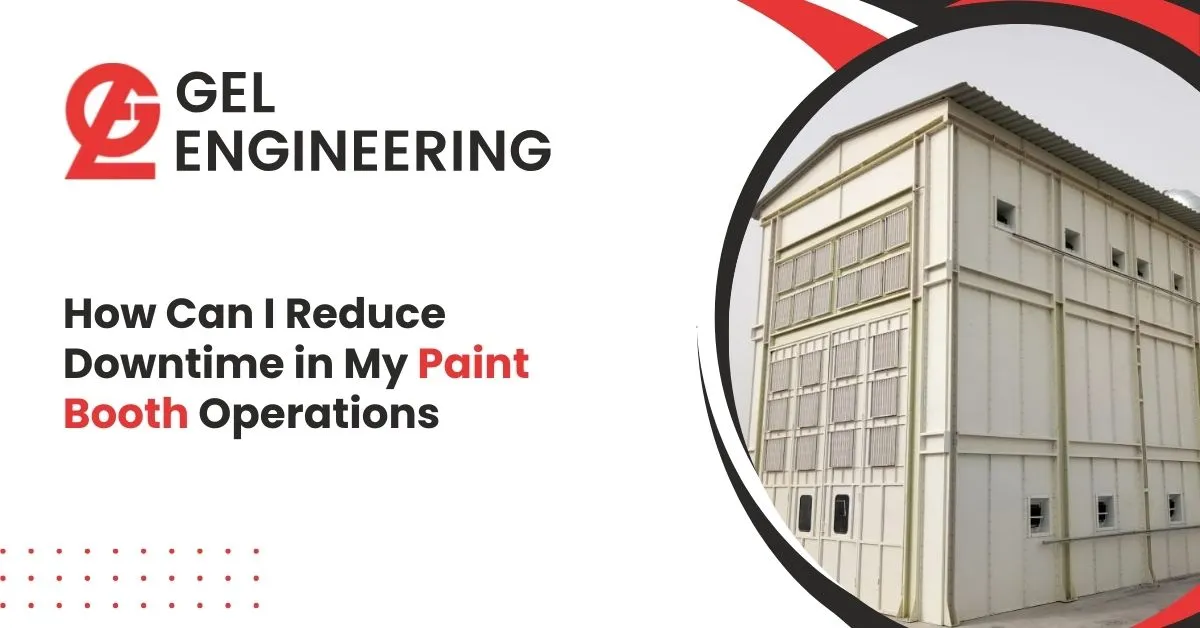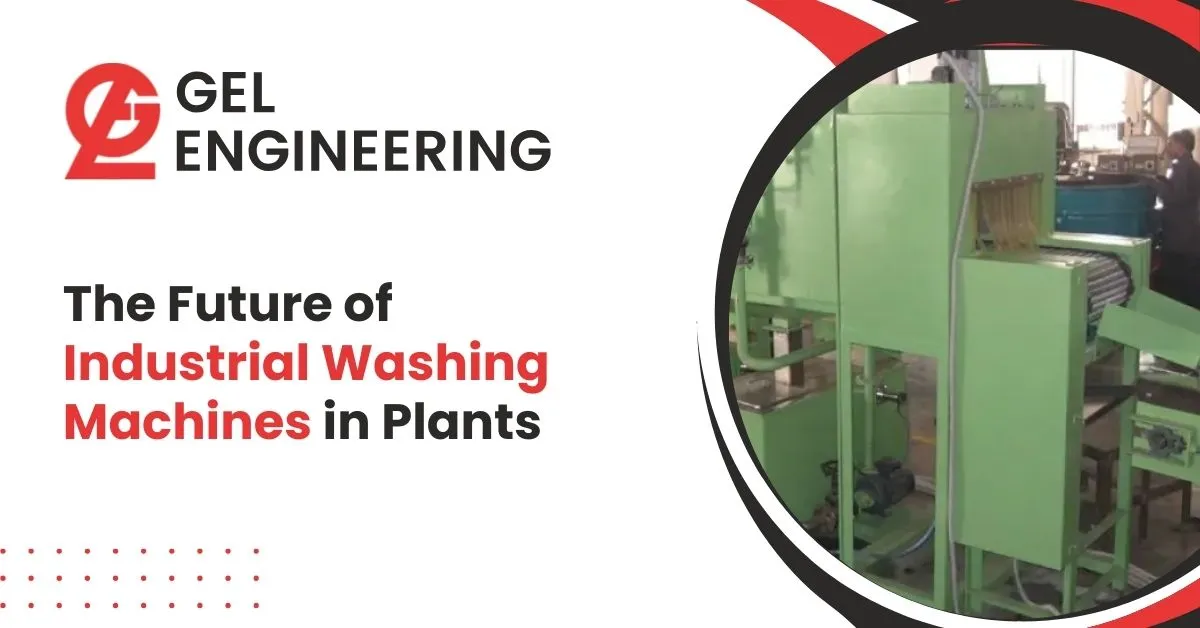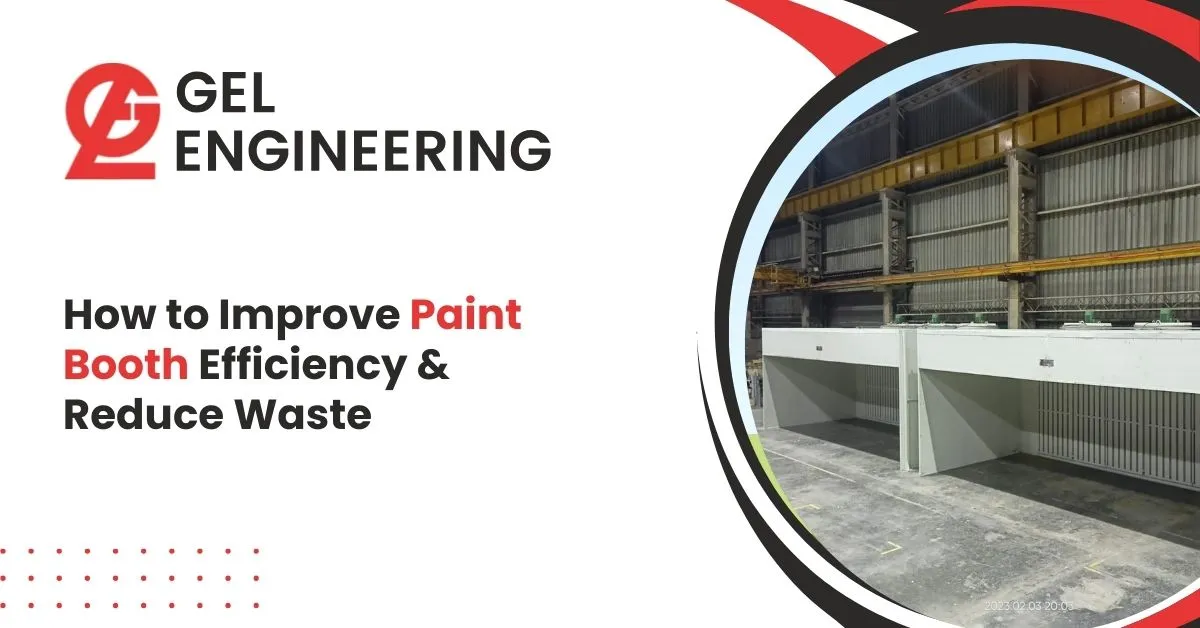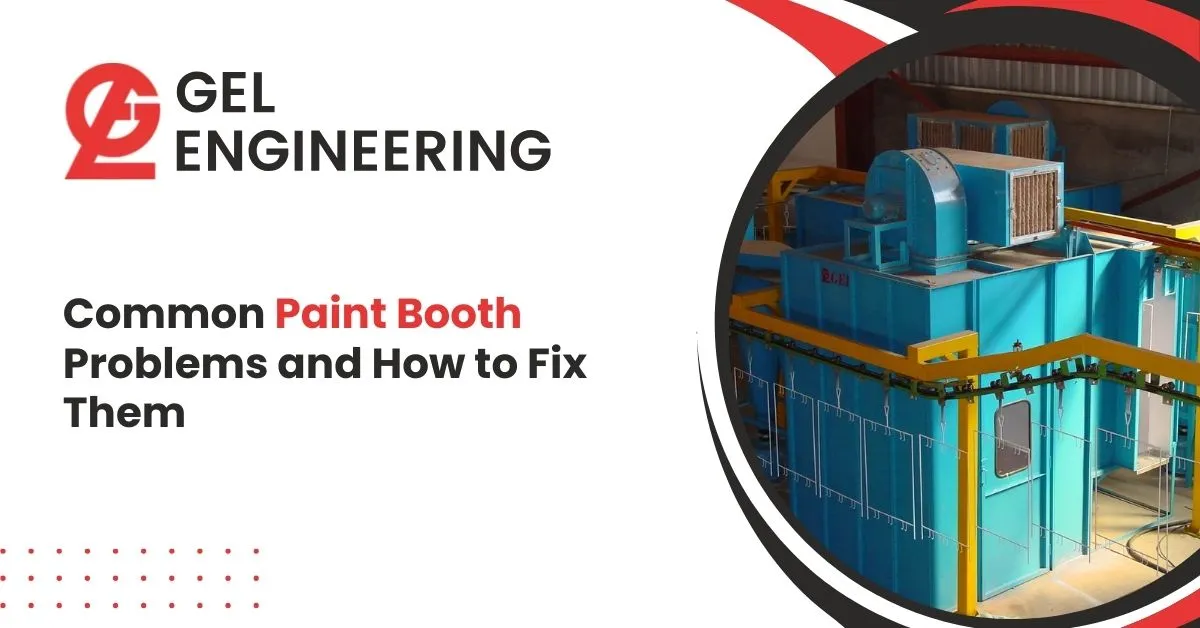Industrial washing machines play a vital role in manufacturing plants across industries like automotive, aerospace,…

In industrial painting operations, minimizing downtime is crucial for maintaining productivity and ensuring cost-effectiveness. A paint booth is a critical component of manufacturing and automotive industries, and any disruption can lead to significant losses. This blog will guide you through the best strategies to reduce downtime and improve efficiency in your paint booth operations.
Table of Contents
Regular Maintenance and Inspections
One of the primary causes of downtime in paint booth operations is equipment failure. Implementing a scheduled maintenance program can prevent unexpected breakdowns. Key maintenance tasks include:
- Check and replace air filters regularly to maintain proper airflow.
- Cleaning exhaust ducts to prevent clogging and fire hazards.
- Lubricating moving parts such as conveyor belts and fans to reduce wear and tear.
- Inspecting spray guns and hoses for leaks or blockages.
A preventive maintenance plan ensures that all components function optimally, reducing the risk of sudden failures.
Optimize Airflow and Ventilation
Proper airflow is essential for maintaining paint quality and reducing overspray buildup. To improve airflow and minimize downtime:
- Ensure that air filters are clean and replaced on time.
- Maintain balanced airflow by checking exhaust fans and intake vents.
- Use high-efficiency air filtration systems to capture contaminants and improve air quality.
Optimized ventilation not only enhances worker safety but also prevents frequent maintenance shutdowns due to clogged filters or overspray issues.
Implement Efficient Cleaning Procedures
Regular cleaning of the paint booth is necessary to maintain operational efficiency. Some best practices include:
- Daily cleaning of floors and walls to remove overspray and dust.
- Wiping down spray guns and hoses after each shift to prevent clogging.
- Periodic deep cleaning of the entire booth to eliminate accumulated residues.
Using automated cleaning systems can further reduce the time required for manual cleaning, thus improving overall productivity.
Train Employees for Efficient Operations
Operator errors often contribute to paint booth downtime. Investing in regular training programs ensures that staff members:
- Understand proper equipment handling and maintenance protocols.
- Follow standard operating procedures (SOPs) for paint application.
- Troubleshoot minor issues before they escalate into major problems.
A well-trained workforce can prevent unnecessary downtime by efficiently managing the equipment and addressing issues proactively.
Looking to optimize your paint booth operations? Contact us today for expert solutions and advanced equipment recommendations!
Use High-Quality Paints and Materials
Low-quality paints and materials can cause clogs, uneven coatings, and extended drying times, leading to operational delays. To avoid such issues:
- Choose premium-quality paints that offer consistent viscosity.
- Store paints properly to prevent contamination and spoilage.
- Use compatible thinners and solvents to prevent the spray gun from clogging.
High-quality materials not only enhance finish quality but also reduce the frequency of equipment failures.
Upgrade to Advanced Equipment and Technology
Modernizing your paint booth with advanced technology can significantly reduce downtime. Consider implementing:
- Automated spray systems for consistent paint application.
- Infrared curing systems to speed up drying times.
- Smart monitoring systems that provide real-time data on booth performance and alert operators to potential issues.
Investing in the latest technology ensures smoother operations and reduces the likelihood of unexpected breakdowns.
Maintain Proper Temperature and Humidity Levels
Environmental factors like temperature and humidity can impact paint application and drying times. To optimize conditions:
- Install climate control systems to regulate booth temperature.
- Monitor humidity levels and use dehumidifiers if necessary.
- Ensure proper ventilation to prevent moisture buildup.
Consistent environmental conditions improve paint adhesion, reduce defects, and prevent rework, thus minimizing downtime.
Frequently Asked Questions
What is an important factor to control in a paint booth?
Airflow, temperature, and humidity are crucial factors to control in a paint booth to ensure high-quality finishes and prevent defects.
How long does a paint booth last?
A well-maintained paint booth can last 10–20 years, depending on usage, maintenance, and the quality of its components.
How do you maintain a spray booth?
Regular maintenance includes cleaning filters, checking airflow, inspecting seals, and ensuring proper exhaust system function to keep operations efficient.
How to dehumidify a paint booth?
Use a dehumidifier or a climate control system to regulate humidity levels, preventing moisture-related defects in paint finishes.
Conclusion
Reducing downtime in your paint booth operations requires a proactive approach that includes regular maintenance, optimized airflow, efficient cleaning, employee training, and the use of high-quality materials. Investing in modern technology and maintaining optimal environmental conditions further enhance efficiency. By implementing these strategies, you can minimize disruptions, improve productivity, and maintain high-quality painting results.




